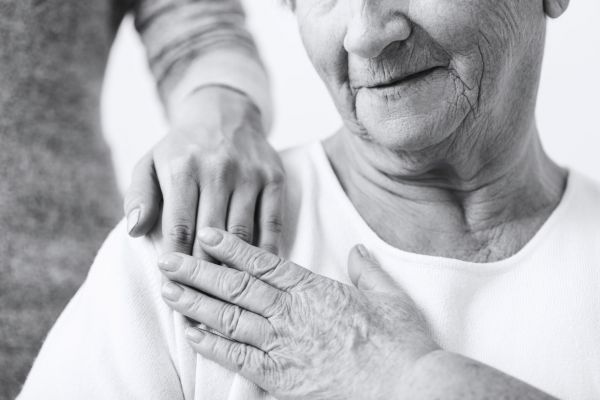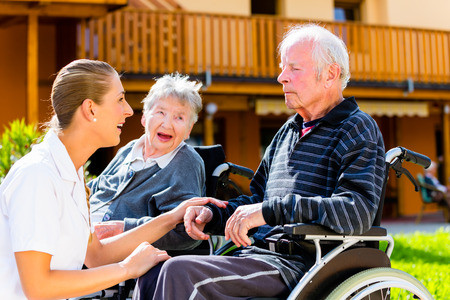The Role of Technology in Long-Distance Caregiving: Bridging the Gap with Connectivity
iSavta | 09.07.2023

As families become increasingly dispersed, the challenges of providing care for aging or ill loved ones who live far away are more prevalent than ever. Long-distance caregiving poses unique obstacles, but thanks to advancements in technology, it is now possible to bridge the geographical gap and provide effective support. In this article, we will explore the crucial role technology plays in long-distance caregiving, enabling caregivers to monitor health, enhance communication, and ensure the well-being of their distant loved ones.
Monitoring Health from Afar
One of the primary concerns in long-distance caregiving is monitoring the health and well-being of the care recipient. Fortunately, technology offers a range of innovative solutions to address this challenge. Remote monitoring devices, such as wearable health trackers and smart home sensors, enable caregivers to keep track of vital signs, activity levels, and medication adherence without being physically present.
Wearable health trackers, such as fitness bands or smartwatches, can monitor heart rate, sleep patterns, and physical activity. These devices provide real-time data that caregivers can access remotely, allowing them to detect any irregularities or changes in health. Smart home sensors can be installed to detect motion, temperature, and even falls, providing an extra layer of safety and security.
Telehealth and virtual consultations have also become essential tools for long-distance caregivers. With video conferencing platforms, caregivers can connect their loved ones with healthcare professionals, ensuring they receive necessary medical advice and consultations from the comfort of their homes. This eliminates the need for frequent travel and enables prompt intervention when health issues arise.
Enhanced Communication and Emotional Support
Maintaining regular communication is vital for both the caregiver and care recipient, as it fosters emotional support, reduces feelings of isolation, and provides peace of mind. Technology offers numerous communication tools that facilitate real-time interaction, regardless of distance.
Video calls and messaging applications allow caregivers to connect with their loved ones visually and audibly, providing a sense of closeness even when physically apart. Regular check-ins, sharing updates, and engaging in meaningful conversations can significantly impact the emotional well-being of both parties.
Social media platforms also play a significant role in long-distance caregiving. Caregivers can create private groups or profiles dedicated to sharing updates, photos, and memories. This enables family members and friends to stay connected, contributing to a sense of community and shared responsibility.
Coordinating Care and Managing Medications
Long-distance caregivers often face the challenge of coordinating multiple aspects of care for their loved ones, including appointments, medications, and caregiving schedules. Technology simplifies these tasks and ensures that crucial information is readily accessible.
Care management platforms and apps allow caregivers to create centralized databases for storing and sharing medical records, care plans, and appointment reminders. These tools enable seamless collaboration with other family members, healthcare providers, and professional caregivers, reducing the risk of miscommunication or oversight.
Medication management apps serve as valuable tools in long-distance caregiving. These apps can send reminders to the care recipient's smartphone or smartwatch, ensuring medications are taken on time. Some even offer features to track medication inventory and refill prescriptions, providing an additional layer of convenience.
Safety and Security Measures
Technology also plays a critical role in ensuring the safety and security of care recipients, particularly those who may be vulnerable or prone to accidents. Various smart home devices and remote monitoring systems contribute to creating a secure environment.
Smart doorbell cameras and home security systems equipped with motion sensors and alarms offer peace of mind for both caregivers and care recipients. These devices allow caregivers to remotely monitor the safety of their loved ones, receive real-time alerts, and even grant access to authorized visitors if necessary.
Additionally, GPS tracking devices can provide an extra layer of security for individuals with cognitive impairments or conditions such as dementia. These devices can help locate a care recipient who may wander or become disoriented, ensuring their prompt return to safety.
Long-distance caregiving presents unique challenges, but technology has revolutionized the way we support and care for our loved ones from afar. From remote health monitoring and virtual consultations to enhanced communication tools and safety measures, technology plays a crucial role in bridging the gap between caregivers and care recipients. By harnessing the power of technology, caregivers can provide effective support, maintain emotional connections, and ensure the well-being of their distant loved ones, creating a more connected and compassionate caregiving experience.











